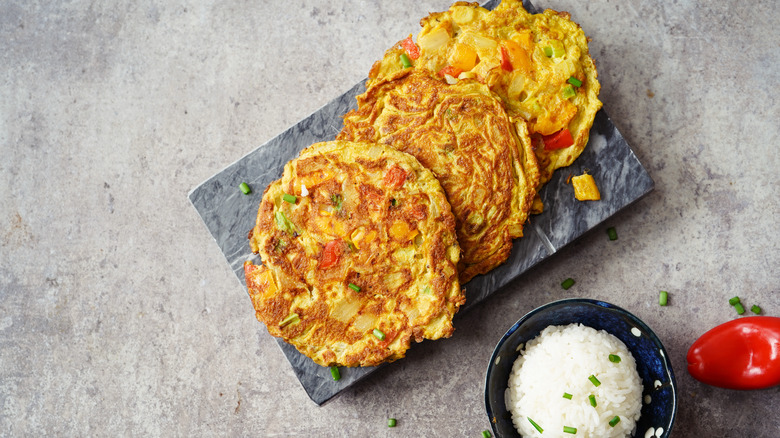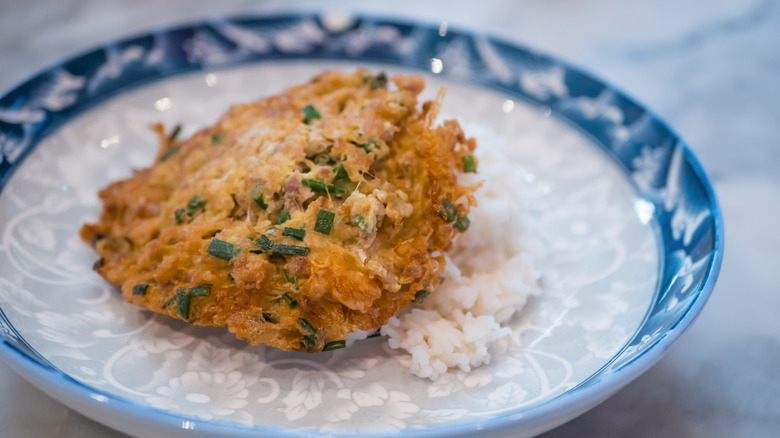The Biggest Mistakes You're Making With Egg Foo Young
Egg foo young is a type of Chinese egg omelet, and though the dish seems simple, there are a few mistakes that many home chefs can make when trying to whip up this versatile dish. Beyond the eggs, the ingredients themselves aren't set in stone — while there are a few more traditional filling options such as shrimp, mung bean sprouts, or tofu (via The Spruce Eats), it all comes down to technique when you're making egg foo young, and we've got tips for every stage of the cooking process.
First of all, as Omnivore's Cookbook suggests, opt for high-quality eggs — they're the star of the show in egg foo young, and you'll notice the difference. After you've cracked the eggs, beat them lightly, but don't let them reach the point where bubbles form. This will help achieve the fluffy texture you're looking for. When it comes to the additional ingredients, make sure to slice everything thinly so it'll cook evenly. Consider pre-cooking your proteins if you have any that will take much longer to cook through. And, unlike Western omelets where you likely sprinkle the filling over the already cooking eggs, for egg foo young you should incorporate the filling into the lightly beaten egg mixture before anything hits the pan. Just don't make the mistake of overloading your egg mixture with endless fillings. The eggs themselves should be the main component of the dish, with the fillings just adding a bit of extra flavor.
Make sure your pan is ready to go — and don't forget the sauce
When it comes to preparing your pan, you want to get it piping hot. You want your eggs to get that slightly browned surface where they make contact with the hot oil, as that'll give you the tantalizing contrast of textures between the fluffy interior and crisp portions on the exterior (via Omnivore's Cookbook). That browning doesn't mean it's overcooked — it means you're doing everything right.
You'll also want to make sure that you're using enough oil. The amount of oil is one of the major differences between egg foo young and a typical Western omelet. In a Western omelet, you're basically just using enough oil that the eggs don't stick to the pan. For egg foo young, the larger amount of oil helps to partially deep fry the eggs, creating that perfect puffed-up texture (via Taste Asian Food). While your dish will still be edible if you skimp on the oil, the texture will be impacted and you'll get a dense plate of egg foo young rather than the fluffy texture you're looking for.
Finally, you won't want to omit the delectable sauce that often tops this dish. The recipes for the sauce vary, just as the fillings for this dish, but most are a combination of chicken broth, soy sauce, Chinese rice wine, sesame oil, and cornstarch to thicken (via The Spruce Eats).

